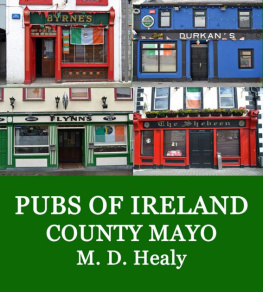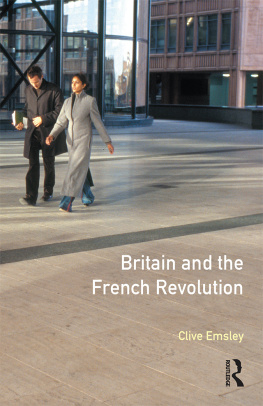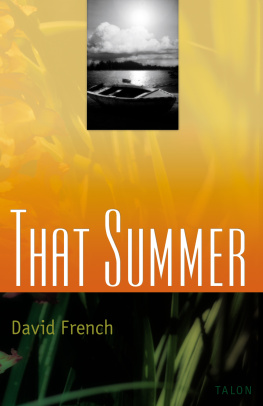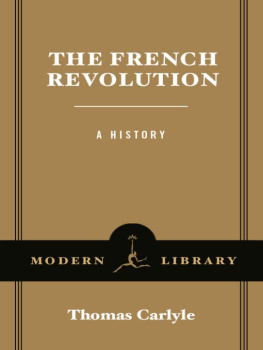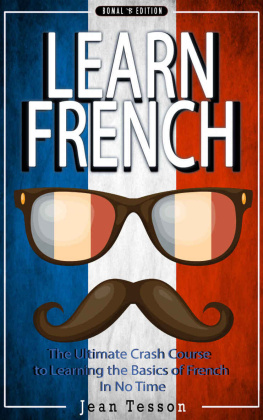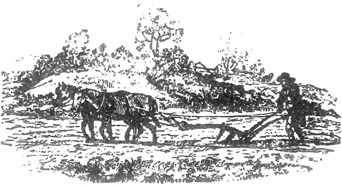
1
FROM AN IMPARTIAL NARRATIVE
OF WHAT PASSED AT KILLALA
IN THE SUMMER OF 1798,
BY ARTHUR VINCENT BROOME, M.A. (OXON.)
Some years ago, when I first took up the pastoral care of the wild and dismal region from which I write, I was prompted to begin a journal in which would be set forth, as I encountered them, the habits, customs, and manners of the several social classes, with the thought that it might someday furnish the substance of a book with some such title as Life in the West of Ireland. I rightly feared that time would otherwise hang heavy on my hands, and I have long been aware of a capacity for slothfulness which can reveal itself when my life lacks order and direction. And it was clear to me that few portions of His Majestys realms are less known than this island, which might for all purposes be adrift on the South Seas, rather than at our doorstep. Before setting forth from England, I had made it my business to read Mr. Arthur Youngs Tour in Ireland, a sage and clear-headed book, bountiful in its information, liberal and enlightened in its temper, but being nevertheless exactly what its title claims it to be, the account of a tour. My work would have the advantage of a prolonged and steady contemplation of the scene, a natural history, as it were, of life in County Mayo.
Alas for good intentions! The journal did have for a time a spare existence, scattered notes set down in the excitement of my encounters with novel scenes and faces, and with a society at once picturesque and alarming. But like others of my projects, it stumbled to a halt after some months, and long lay gathering dust upon a shelf in my library. Where these notes are now I cannot say; perhaps they served to start a fire, this being a fate which locally befalls loose sheets of paper. They would have served no large purpose, however, for my early impressions were all, as I now know, misleading, this land being as treacherous as the bog which stretches across much of its surface. It is, in a most exact sense of the word, an outlandish place, inhospitable to the instructions of civilisation.
My present purpose, more practical and limited, is to offer as fully and as impartially as I can, yet without idle digression, a narrative account of those events which, a few years ago, bestowed upon our remote countryside a transient celebrity. Those events, however, were given their particular shape by the collision of an extraordinary event with an extraordinary society. It is therefore necessary that I present at the outset my own halting and puzzled sense of that peculiar world which was to provide a theatre and actors for my drama.
A map reveals Mayo as a county on the western extremity of what has been, for the past several years, the United Kingdom of Great Britain and Ireland. At the time of which I write, of course, Ireland was in theory a separate nation, possessing its own parliament, yet sharing with England King George as its sovereign ruler, and being much under English influence. Of its illusionary and fictitious independence I shall have something to say hereafter. It is more to the present point to observe that the events which I propose to unfold played their part in bringing down the much-boasted but trumpery Kingdom of Ireland. Thus do large and stately changes have at times their origins in crude and remote circumstances.
Were I to have the colouring of that map of Ireland, Mayo would appear upon it in browns and blues, the brown of hillside and bogland, arched over by an immense sky of light blue. Save when it rains, which, alas, is often. It is raining as I write these words, steadily and copiously, and shrouding from view the bay towards which my library faces. My parish is centered upon the town of Killala in the barony of Tyrawley, once a bishops see and a prosperous community of coastal traders, but for decades past in a state of sore decline and disrepair. There are other towns in Mayo, of course: Ballina, our successful rival to the south; Westport on the western coast, the seat of the Marquis of Sligo and graced by his elegant mansion. But there is only one town of true consequence, Castlebar, the capital of Mayo as it is grandiloquently termed, and the town towards which all the roads of Mayo lead. A Muscovite garrison placed upon the border of Siberia must have a similar appearance, although, like all the towns of Ireland, it is built entirely of stone, save for the mud cabins of the very poor. It has streets, a courthouse, a church, a gaol, a market house, a military barracks, the houses of prosperous merchants. And yet all seems provisional, gaunt, slender buildings huddled together against the immensities of sky and land. For to speak of County Mayo in terms of its towns is entirely deceptive. The impression which it first makes upon the eye and mind is that of limitless and inhospitable space, the vast, dreary expanse of bogland westwards from Crossmolina, the steep and lonely headlands and peninsulas. It is its own huge and sombre world, and by contrast with it, the flanking counties of Galway and Sligo present a civilised aspect which is, unfortunately, entirely spurious.
Neither is it a populous world, if we restrict our consideration to what would in England be termed the county families. Within a mornings or a days ride, I could then have claimed as neighbours some fifty or sixty families of the gentry and the near-gentry, these latter being locally termed half sirs, or half-mounted gentlemen. Close at hand, within the Killala and the Kilcummin boundaries, I had as neighbours, among others, Peter Gibson of The Rise, Captain Samuel Cooper of Mount Pleasant, George Falkiner of Rosenalis, my especial friend, as these notes will reveal, and, on the Ballycastle road, Thomas Treacy of Bridge-end House. At a greater distance, involving arduous travel along wretched roads, stood the estates of George Moore of Moore Hall, Hilton Saunders of Castle Saunders, Malcolm Elliott of The Moat, and a score of others. All of them, save only Moore and Treacy, were members of my parish, for it is one of the most notorious facts of Irish life that those who own the land and those who till it are severely divided by sect, the landlords being Protestant almost to a man, and the tenants and labourers being Papists.
To speak thus of our county society is to ignore its absent centre, for dominating over our barony and those adjoining it are the estates, imposing and at first sight endless, of Lord Glenthorne, the Marquis of Tyrawley, or as he is called here, in a phrase taken from the Irish, the Big Lord. The term falls with a faint blasphemy upon the ear, and Lord Glenthorne does resemble our Creator in that, having this vast domain at his disposal, he has elected to absent himself from it. In this there is nothing unusual, for the resident Irish landlords are for the most part the smaller ones, with estates of a thousand acres or less, while the great men of property are absentees, a circumstance which many hold to be contributory to our manifold woes. Lord Glenthorne, however, has chosen never to reveal himself, not even for brief visits, and yet so vast and so eminent is his place in our scheme of things that he has achieved on peasant tongues a legendary stature, a fathomless creature, beyond good or evil. In point of fact, before taking up my present charge, I was presented to him in London, where I found him to be a small, mild man of middle years, simple and unaffected in manner, and attentive to his religious duties. I was to meet him also a second time, much later, on which occasion I was to form a more distinct impression of him, perceiving then that he was in every sense a lord.
To ride from here to Ballina is to ride for mile after mile beside the walls of his principal demesne, walls so high that a man on horseback can scarcely see over them, and all of cut stone. On occasion, the road will rise, and the traveller can glimpse in the distance, beyond sheltering plantations, the lovely form of Glenthorne Castle, a vast Palladian mansion which will seem to have floated down upon these inhospitable lands by some magical feat out of the
Next page

